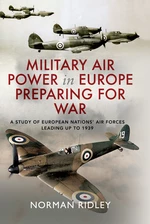The First World War had seen the mechanization of warfare. Battle fronts had become immobilized in the grip of machine-guns and heavy artillery, leading to slaughter on an unprecedented scale. The end of the war saw exhausted governments extricating themselves from the carnage, but some leaders were concerned that, sooner or later, another major war would follow. As France’s Marshal Foch put it, the Treaty of Versailles was only a ‘twenty-year truce’. The overriding concern was to find ways in future of avoiding the kind of static battle fronts that had consumed so many in such futile efforts. Military aviation was seen as the one great innovation that had the potential to do this by revolutionizing warfare. It would not only augment the effectiveness of ground forces in a tactical role, but it also had the means of reaching out strategically beyond the battlefronts to strike at the enemy’s trade, supplies, communications and industrial production. All through the war, military aviation had been firmly under the control of army commanders but there was soon a fierce debate over the way it should develop. The development of an ‘air doctrine’ within each of the major European powers was fraught with difficulty as the nascent air arms struggled, with varying degrees of success, to free themselves from army control to find a new, independent identity. This book examines the way in which these air arms competed for prominence within the military structures of six major European nations – Germany, Britain, France, Soviet Union, Poland and Italy – with different resources, ambitions and philosophies, in the years from the beginning of aviation right up to the start of the Second World War.
Price history
Jan 25, 2023
€23.86

